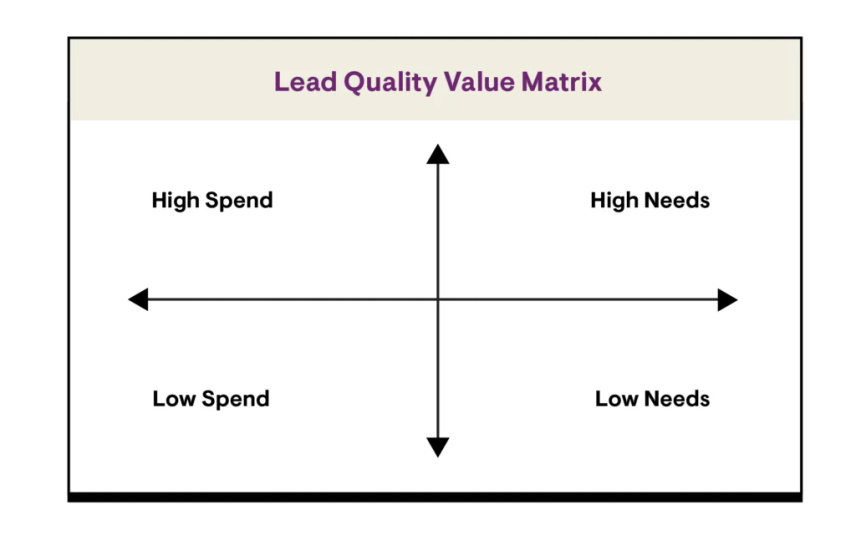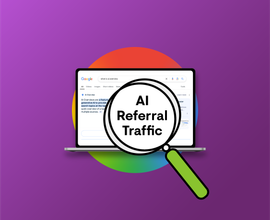How to Improve Lead Quality Through Enterprise Digital Transformation
How’s that digital transformation working out for you?
You chose all the best solutions, and you were positive they’d help you drive the type of high-quality leads that would create incredible business results. Yet your ROI is still lacking, and lead quality hasn’t improved.
If you’re an enterprise CMO or VP of Marketing standing at this critical crossroads, it’s time to ask two key questions: What’s missing? Why is it missing?
To find the answers, you’ll need to flip the script on digital transformation. That means thinking first about the processes and measurements that will help you identify and define high-quality leads. Only then will you be able to connect your people and technology in a way that can help you transform your lead generation strategy and invigorate the quality of leads you produce.
Digital transformation and lead generation: beyond the buzzwords
The stakes of getting digital transformation right have never been higher for enterprise organizations. Last year, 76% of CMOs listed it as their most critical focus, which comes as no surprise considering the ongoing economic recovery rollercoaster following COVID and global supply chain disruptions forcing businesses to pivot to a digital-first approach.
Search interest in digital transformation rose steadily throughout all of last year. In particular, searches for “what is digital transformation” peaked in May and June 2021 with an MSV of 2,400, according to data from Conductor’s State of Digital Transformation report.
With so much on the line, I’d like to give you some detailed information to help you create a digital transformation strategy that actually works. Let’s start by going beyond the buzzwords and defining exactly what “digital transformation” and “lead generation” mean to the modern enterprise.
One of the problems with traditional digital transformation definitions is that they stay surface-level. It’s more than just embedding technology across your business; it goes beyond modernization and optimization.
To me, digital transformation means leveraging the latest technology to streamline processes, align with the right people, and pursue new business opportunities as well as meet emerging customer needs and expectations.
Lead generation is much more than simply producing, scoring, and qualifying leads. I define lead generation as the process of analyzing all accessible customer and industry data and translating that wisdom into assets that attract interest from your target audience to develop a healthy, data-driven sales pipeline.
The link between digital transformation and lead quality
You might think quality leads come from successful enterprise digital transformation. In reality, the opposite is true. Your enterprise’s ability to generate higher-quality leads using tech-driven processes, data analysis, and marketing automation will actually help drive the success of your overall digital transformation initiatives. That’s because the better the lead, the more likely you’ll turn a prospect into a customer and create new business.
Let’s get one thing clear: Lead generation is more than a numbers game. So, setting a goal to increase the total number of leads won’t drive the results you’re looking for.
You don’t need millions of leads. You need the right leads.
Here’s why. Let’s say you’re hiring a new Director of Marketing Strategy. Your HR team gives you two choices. They can either send you 1,000 resumes of people who might fit the job or they can send you resumes of the two people who are most likely to take the job and do that job well. Odds are, you’d select the latter.
In the same way that culling through 1,000 resumes is overwhelming, asking your marketing or sales team to handle thousands of leads without any type of quality control is equally as crushing. It seems basic, yet for most enterprise marketing teams, identifying the right leads isn’t easy.
The two most common lead generation challenges for enterprise organizations
Challenge #1: Focusing on lead volume instead of lead quality
While common marketing wisdom focuses on pushing leads through a funnel, I look at lead generation a bit differently.
Lead generation isn’t a funnel. It’s an hourglass. And the sand always flows to the bottom.
What do I mean by that? Leads, as they pass qualification stages, eventually work their way down the hourglass and get passed to your sales team. But, this is not where the funnel ends.
The bottom of your sales funnel is where it opens back up to the customer experience post-sale—when the hourglass gets flipped on its head. Each lead that passes fully through then becomes a customer and provides you with a wealth of information.
Are you analyzing that data to inform lead quality and better understand makes a good prospect? Or are you focused solely on passing as many leads as possible and failing to follow those leads throughout their journey to evaluate their intent and learn why they did or didn’t close?
If you’re doing the latter, you’ll bury your sales team in MQLs (marketing qualified leads) that they will begin to de-prioritize if they find these leads tend to be low quality and a waste of their time. Rebuilding that relationship takes time and will cost you revenue when viable MQLs get overlooked. Proper data analysis of the customer experience post-sale can help you more accurately evaluate the quality of leads marketing produces and inform the type of content you serve up to prospects so you can attract those with the highest intent.
Challenge #2: An inability to score leads properly
Unless you’re in a super-niche market, your enterprise’s products aren’t one-and-done. Your success most likely depends on your ability to build deep and lasting relationships with your potential customers.
That means you need to score each lead on their propensity to buy right now and their potential long-term or lifetime value . You must fully understand what your prospects’ journey will look like both before and after they transact. Then you can effectively measure and assign potential revenue generation for different types of prospects based on similar customers’ spend over a set period of time.
Getting a full lifecycle view on lead scoring through digital transformation is the only way you can identify and then challenge any existing false assumptions about what makes a good lead vs. a bad lead. A holistic approach also will help you avoid missed opportunities for long-term revenue growth.
What are high-quality leads?
No matter which common lead generation challenges you face, you’ll need to shake up your thinking about what makes a high-quality lead to truly transform.
On the surface, the definition of a high-quality lead seems obvious. It’s someone who shows interest in your product or service, is well educated in your offerings, and is ready to buy, right?
Partially. More modern definitions include leads that will result in positive ROI and those most likely to become long-term customers.
Turning the modern definition of high-quality leads into action will require CMOs and fellow marketing leaders to take an entirely different view on lead measurement.
Consider the case of a customer who will likely be a low spend at acquisition. In the past, your team may have considered them a lower-quality lead. But if you look at post-acquisition data for similar customers, you may find that others like them have returned. And once they do, they up their repeat investment with your enterprise by 2x, 5x, or even 20x.
They don’t seem so low-quality now, do they?
Digital transformation—when implemented with the right processes, people, and technology—can give your team the holistic data they need to improve your lead scoring and separate your high-quality leads from your low-quality leads with improved accuracy.
Doing so requires you to redefine what your ideal customer looks like. Throw any old, non-data-based assumptions out the window. Instead, reconsider what a high-quality customer might look like. Is it:
- A customer who achieves a certain amount of usage on your platform?
- A customer in a specific industry?
- A customer with a specific headcount on their team?
- A customer’s initial spend?
- Based on a customer’s total amount of potential revenue?
One of the considerations I like to build into determining lead quality is measuring their potential spend vs. the amount of resources they’ll consume. To do so, I use this simple four-quadrant matrix chart. The two quadrants on the left-hand side are labeled high-spend and low-spend. The two quadrants on the right are labeled high needs and low needs.

Plot out your potential customers on the graph. A very needy client with low spend will create dissatisfaction both internally and externally. This kind of account probably isn’t scalable, either. As such, you’ll probably want to consider them a low-quality lead. But, as discussed above, don’t forget to compare low-quality prospects to similar, past customers to identify potential lifetime value and whether they tend to upgrade to high-spend, high-needs. If so, then this is still a prospect worth investing time and resources in to get them to that level.
If a client has high needs and a high spend, their relationship with your enterprise may create some stress but will drive business results. So, they should be a higher-quality lead.
The sweet spot, of course, is a high-spend, low-need client. They represent your best opportunity and, as a result, your highest-quality leads. With these types of prospects, it’s critical to identify why they are low need. You should work to develop a strong relationship with these customers or they will be ripe for the taking from competitors with lower pricing—especially in SaaS. Also, don’t mistake low need for apathy as this can have a negative impact on customer retention.
For many marketing leaders, taking this type of lifecycle approach to lead scoring will help identify previously missed opportunities. On the flip side, you may implement new lead-scoring methodologies and find that you’re already getting high-quality leads. That’s a good thing, too, because it will help validate your marketing team’s value to your enterprise organization.
How to improve lead generation through digital transformation
Plotting out your high-need and high-value clients is the easy part. Getting the data you need to determine which clients have high needs and which ones are potentially high-value, that’s where digital transformation meets lead generation head-on.
Getting it right starts with remembering your organizational initiative—why does your company do what you do. From there, you need to make sure your initiative is filtered into the three necessary pieces of successful digital transformation (drum roll, please): process, people, and technology.
Download the full guide now for the detailed process, people, and technology insights and tips you need to improve lead quality through digital transformation.







